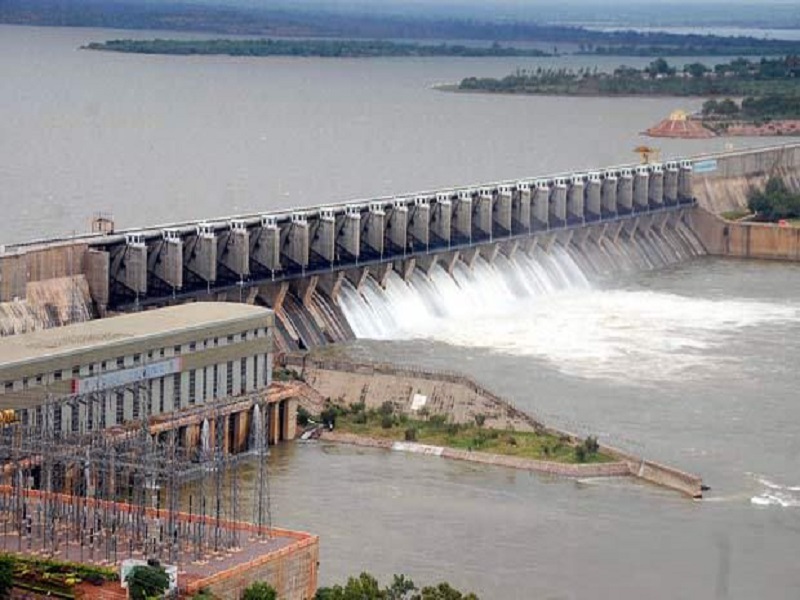New Delhi: In order to enhance water security in the country and support sustainable development, the Government of India on Wednesday signed a $250 million loan agreement with the World Bank for the Second Phase of Dam Rehabilitation and Improvement Project (DRIP Phase II) to make existing dams and communities safe and resilient across India. The Ministry of Jal Shakti, ten (10) States namely Chhattisgarh, Gujarat, Kerala, Madhya Pradesh, Maharashtra, Manipur, Meghalaya, Odisha, Rajasthan, and Tamil Nadu, and the Central Water Commission attended the loan signing ceremony. The balanced USD250 million external funding from Asian Infrastructure Investment Bank (AIIB) is under consideration.
This DRIP Phase II is the first phase of externally aided DRIP Phase II and Phase III, approved by the Government of India in October 2020. The Scheme has the participation of nineteen (19) States and three (3) Central Agencies. The Budget Outlay for both Phases is Rs 10,211 Cr for an implementation period of ten (10) years. The Scheme will be implemented in two phases, each of six years’ duration, with two years’ overlap.
The agreement was signed by Rajat Kumar Mishra, Additional Secretary, Department of Economic Affairs, Ministry of Finance on behalf of the Government of India; the Ministry of Jal Shakti was represented by Smt. Debashree Mukherjee, Additional Secretary, and Junaid Ahmad, Country Director, India on behalf of the World Bank as well as official representatives of concerned States.
This new Scheme will strengthen dam safety initiatives taken by the Government of India through physical rehabilitation of selected dams by addressing various concerns to improve safety and operational performance, institutional strengthening in various ways, incidental revenue generation for sustainable operation & maintenance of dams etc. The Scheme is designed to infuse global know-how, innovative technologies in dam safety. Another major innovation envisaged under the project, that is likely to transform dam safety management in the country, is the introduction of a risk-based approach to dam asset management that will help to effectively allocate financial resources towards priority dam safety needs. Also, Scheme implementation will equip the Indian dam owners to gear up their human resources to comprehensively handle many important activities envisaged in the proposed Dam Safety Legislation.
The program will enable states and dam owners to extend these safety protocols and activities beyond the selected dams to all other dams within their jurisdiction, overall enhancing the culture of dam safety in the country. This program complements the provisions in the Dam Safety Bill 2019, by ensuring capacity building of the dam owners as well as the proposed regulators, as well as creating necessary protocols for dam safety. It is likely to generate employment opportunities equivalent to approximately 10,00,000 person-days for unskilled workers, and 2,50,000 person-days for working professionals.
India ranks third globally after China and the United States of America, with 5334 large dams in operation. In addition, about 411 dams are under construction at present. There are also several thousand smaller dams. These dams are vital for ensuring the water security of the Country. Indian dams and reservoirs play an important role in the economic and agricultural growth of our country by storing approximately 300 billion cubic meters of water annually.
These dams present a major responsibility in terms of asset management and safety. Due to deferred maintenance and other health issues, these dams have associated risks in case of failure. The consequences of dam failure can be catastrophic, in terms of loss of human life and property, and damage to the ecology.
The first phase of the DRIP program, which covered 223 dams in 7 states, improved the safety and operational performance of selected dams, along with institutional strengthening through a system-wide management approach, has been recently closed in March 2021.
In order to carry forward the momentum gained through ongoing DRIP, and expand it vertically and horizontally, the new Scheme, DRIP Phase II, co-financed by World Bank (WB) and Asian Infrastructure Investment Bank (AIIB) with US$250 million each, covers large dams in 19 states of the country.
This Scheme is especially focused on mitigating the risks of dam failure and ensuring the safety of people, riverine ecology, and property located downstream of these selected dams, through structural as well as non-structural measures like physical rehabilitation, preparation of Operation and Maintenance Manuals, Emergency Action Plans, Early Warning System and various other measures.
The life of these selected reservoirs will be extended further by addressing health and safety concerns of these selected dams; in turn, these assets will provide planned benefits efficiently for a longer period to the public at large in terms of various direct benefits like irrigation, drinking water, hydel power, flood control, etc.
In addition to physical rehabilitation, as mentioned before, equal emphasis has been given to the capacity building of dam owners in order to ensure the availability of trained and skilled manpower for better operation of dams during all seasons in a year. Customized training programs for various technical and managerial aspects will assist dam owners to create a pool of knowledge to deal with matters of dam safety confidently and scientifically.
In view of the size of India’s dam portfolio and challenges in operating and maintaining these existing assets, the Government of India is making all-out efforts to ensure the availability of a pool of dam safety professionals across the country. The provision for partnerships with premier Academic Institutions like IISc and IITs and capacity building of five (5) Central Agencies along with dam owners will strengthen the theme “AtmaNirbhar Bharat”. It will ensure the long-term sustainability of required knowledge and human resources to assist our dam owners. India will also position itself as a knowledge leader on dam safety, particularly in South and Southeast Asia.

